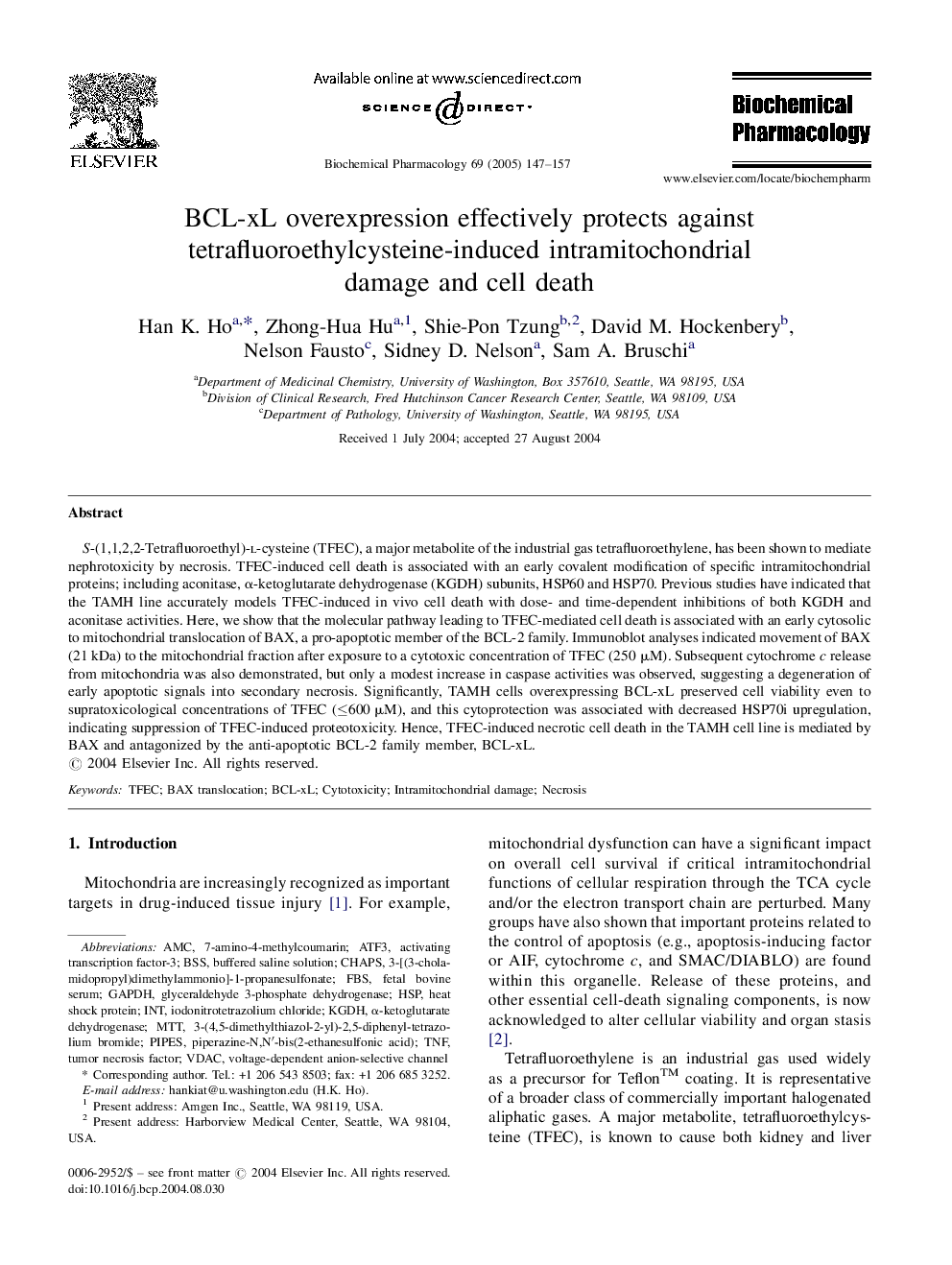| Article ID | Journal | Published Year | Pages | File Type |
|---|---|---|---|---|
| 9002488 | Biochemical Pharmacology | 2005 | 11 Pages |
Abstract
S-(1,1,2,2-Tetrafluoroethyl)-l-cysteine (TFEC), a major metabolite of the industrial gas tetrafluoroethylene, has been shown to mediate nephrotoxicity by necrosis. TFEC-induced cell death is associated with an early covalent modification of specific intramitochondrial proteins; including aconitase, α-ketoglutarate dehydrogenase (KGDH) subunits, HSP60 and HSP70. Previous studies have indicated that the TAMH line accurately models TFEC-induced in vivo cell death with dose- and time-dependent inhibitions of both KGDH and aconitase activities. Here, we show that the molecular pathway leading to TFEC-mediated cell death is associated with an early cytosolic to mitochondrial translocation of BAX, a pro-apoptotic member of the BCL-2 family. Immunoblot analyses indicated movement of BAX (21 kDa) to the mitochondrial fraction after exposure to a cytotoxic concentration of TFEC (250 μM). Subsequent cytochrome c release from mitochondria was also demonstrated, but only a modest increase in caspase activities was observed, suggesting a degeneration of early apoptotic signals into secondary necrosis. Significantly, TAMH cells overexpressing BCL-xL preserved cell viability even to supratoxicological concentrations of TFEC (â¤600 μM), and this cytoprotection was associated with decreased HSP70i upregulation, indicating suppression of TFEC-induced proteotoxicity. Hence, TFEC-induced necrotic cell death in the TAMH cell line is mediated by BAX and antagonized by the anti-apoptotic BCL-2 family member, BCL-xL.
Keywords
VDACBax translocationFBSBcl-xLTFECGAPDHintATF3AmCTNFHspBSS3-[(3-cholamidopropyl)dimethylammonio]-1-propanesulfonate3-(4,5-dimethylthiazol-2-yl)-2,5-diphenyl-tetrazolium bromide7-amino-4-methylcoumarinMTTpiperazine-N,N′-bis(2-ethanesulfonic acid)α-ketoglutarate dehydrogenasefetal bovine serumCytotoxicitytumor necrosis factorActivating transcription factor-3Pipesbuffered saline solutionNecrosisHeat shock proteinCHAPSvoltage-dependent anion-selective channelglyceraldehyde 3-phosphate dehydrogenaseiodonitrotetrazolium chloride
Related Topics
Health Sciences
Pharmacology, Toxicology and Pharmaceutical Science
Pharmacology
Authors
Han K. Ho, Zhong-Hua Hu, Shie-Pon Tzung, David M. Hockenbery, Nelson Fausto, Sidney D. Nelson, Sam A. Bruschi,
